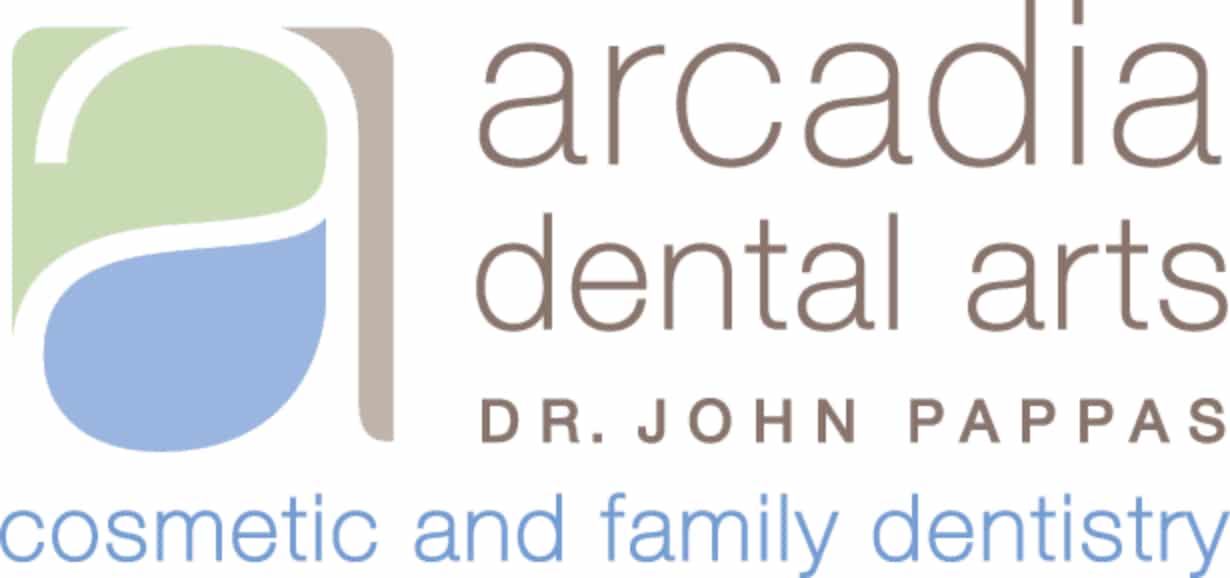A chipped tooth can feel like your worst nightmare. Thanks to dental bonding, it doesn’t have to be. This quick and easy procedure is a non-invasive way to fix many other cosmetic concerns, as well, such as:
- Filling gaps between teeth
- Improving discolored teeth
- Changing the shape of the teeth
- Lengthening teeth
- Repairing chips and cracks
- Repairing tooth decay damage

Patient Testimonials
“The staff was very caring and gave Excellent customer service. I have found my new dentist office and have already referred two of my friends to come here.”
– Alisa S.
“Dr.Pappas and his staff are amazing! Very thorough, comprehensive, full-service care. Wonderful bedside manner – best dentist my husband and I have been too.”
– Sunny D.
What Is Dental Bonding?
Dental bonding uses tooth-colored composite resin to repair decayed, chipped, fractured, or discolored teeth. Composite resin is a combination of tooth-colored plastic and glass combined into a workable, yet very strong tooth covering. The composite resin is chosen to match the surrounding teeth; it is shaped to fit, and then polished to a perfect finish. Dental bonding is one of the least expensive cosmetic dental procedures; it’s an alternative to porcelain veneers or dental crowns, both of which are more expensive dental restorations.
Bonding requires a certain degree of artistic sense from Dr. Pappas. He places the composite resin in layers, curing it as it is built up. For larger applications, such as replacing a chipped area of a tooth, Dr. Pappas must recreate the lost piece of tooth. His expertise makes this an effective repair tool for cosmetic problems with a tooth.
Candidates for Dental Bonding
Anyone can have dental bonding as a cosmetic repair for a tooth. Maybe you have a tooth that is discolored from the tetracycline you were given as a child. Maybe you have a chip on a corner you’d like to fix. You see all of the uses listed above.
One thing is important to know with bonding, however. It is only a cosmetic fix. If a tooth has a true problem, such as decay or a deep crack, those issues cannot be covered up with composite resin in a dental bonding treatment. Actually, Dr. Pappas would first have to resolve the issue for the tooth to then be eligible for the aesthetic improvements of bonding.

What can't bonding treat?
Dr. Pappas cannot place composite resin on a tooth with bonding if the tooth has extensive damage. For instance, if the tooth has a deep crack, he will not place bonding on the tooth. It would require a crown or maybe an onlay for repair. If a tooth has decay, it also cannot receive bonding until the decay has been fully removed and a filling placed. If a patient has gum disease, bonding is not appropriate until the gums have been addressed.
Dental bonding is only a cosmetic dental procedure. To have Dr. Pappas fix a cosmetic flaw with the tooth any underlying issues with the health of the tooth would need to be fixed first.
Also, certain large issues, such as a large chip, cannot be fixed with bonding. The tooth would likely need a crown. Large gaps between teeth cannot be fixed with bonding. Small gaps, yes, but not large gaps.
Dental Bonding Before & After Images

Advantages & Disadvantages of dental bonding
There are pluses and minuses involved with bonding at Arcadia Dental Arts. Here are both sides:
Dental Bonding Advantages
- Bonding is much cheaper than crowns or veneers.
- Bonding can be done in a single visit, usually requiring just an hour or so.
- The resin color is matched to your natural teeth very accurately.
- No anesthetic is needed.
- The procedure is completely non-invasive.
- Bonding doesn’t require removing healthy tooth material, as is necessary with crowns and veneers.
Dental Bonding Disadvantages
- Chewing hard foods and grinding your teeth can make the bonding crack or chip.
- Composite resin doesn’t resist staining the way dental porcelain does, although it resists staining better than natural tooth enamel.
- Excessive bite force or trauma can cause the bond to detach.
- Bonding isn’t meant for large areas.
- Bonding doesn’t return strength to a damaged tooth, as a crown does.
- Bonding doesn’t respond to whitening.
How to prepare for treatment
There isn’t anything you need to do. These can be a spur of moment treatments, if necessary. For instance, if you come to Arcadia Dental Arts for your twice-yearly professional cleaning and exam and we see a new chip on a tooth, Dr. Pappas can usually do some dental bonding on the tooth during your same appointment. No preparation needed.
What Is The Dental Bonding Procedure?
First, Dr. Pappas will match the color of the material that matches your teeth best. Unless the bonding is being done to fill a decayed tooth, no anesthesia will be needed.
Next, the surface of the tooth is prepared for bonding. A simple roughening of the surface followed by the application of a conditioning liquid is all that is needed to prepare the tooth.
The bonding material is then placed on the tooth. Thanks to its putty-like texture it can be molded and smoothed for a perfect fit and natural appearance. Once the desired placement is achieved, ultraviolet light is used to help the material harden quickly.
Finally, Dr. Pappas will smooth and polish the bonding for a naturally beautiful finish.

Dental bonding vs. porcelain veneers
While both dental bonding and the application of porcelain veneers have the same end goal — to cover cosmetic imperfections and create a perfect smile — they do it in different ways. Bonding uses a composite resin that is sculpted on the teeth, cured, and then polished. To prepare the teeth for bonding, Dr. Pappas will slightly rough up the enamel for better adherence to the resin.
Veneers are thin porcelain shells that are cemented onto the fronts of the teeth. To make room for the veneers, approximately 0.3 mm to 0.5 mm of the tooth enamel must be shaved off. By removing this enamel, these teeth will always have to be covered with veneers (or a crown) in the future.
In use, porcelain veneers do not stain and are quite durable. The resin used in bonding is more resistant to staining than natural tooth enamel, but it can stain over time. Veneers last longer but are more expensive than bonding.
What Results Can I Expect From Dental Bonding?
Dental bonding can fix various cosmetic flaws with the teeth: chips, small cracks, discoloration, misshapen teeth, small gaps, and others. Dr. Pappas uses a shade guide to match the composite resin precisely to the color of your adjacent natural teeth. Then he sculpts the resin in layers until he makes the shape fit the tooth type perfectly. He can then shave off any areas he’s not satisfied with.
The end result of bonding is a cosmetically perfect tooth or teeth. And who couldn’t use a few of those?
Dental bonding is often compared to porcelain veneers, as they both can mask the cosmetic appearance of a tooth or teeth. This is a fair comparison, but bonding doesn’t last anywhere near as long as veneers, which can last up to two decades. If you take good care of your teeth and don’t do things such as chewing ice, bonding can last for up to one decade.
How Long Dental Bonding Results Last
The life of a dental bond depends on many factors. The location of bonding is one of the biggest factors. If you grind or clench your teeth, during the day or while sleeping, this can place stress on the bonding and shorten its lifespan. In addition, using your teeth as a tool to open things or to chew on hard substances like ice can also damage dental bonding. The bottom line is if you take good care of it, dental bonding can last for many years.

What Is The Recovery Like After Dental Bonding?
There isn’t any recovery or pain associated with dental bonding at Arcadia Dental Arts. The composite resin is applied to the exterior of the tooth. Patients don’t even need any local anesthetic prior to having dental bonding.
How To Care For Your Teeth After Bonding Treatment
Teeth that have been bonded with composite resin don’t need any special care. Simply follow your typical good home hygiene practices of brushing for two minutes twice a day and flossing once a day. And be sure to keep your twice-yearly professional exams and cleanings with the team at Arcadia Dental Arts.
Is There Anything I Would Need To Avoid After Having Dental Bonding?
Your bonded tooth is immediately fine for eating and drinking. There isn’t any wait time or recovery.
However, there are some things you would want to avoid to protect your bonding and the appearance of your tooth. You should not bite hard candy or foods with that tooth, if possible, as this can chip the resin. You definitely shouldn’t chew your fingernails (this is good advice for all of your teeth!).
Can I Eat And Drink Normally After The Procedure?
Dr. Pappas instantly cures the composite resin he uses for your bonding, allowing it to fully harden. That allows him to smooth and polish the resin immediately. Because of that, there aren’t any restrictions on when you can eat or drink. You can use your bonded tooth immediately.
New composite resin is somewhat more susceptible to staining for a brief period, however. So, for the first two days after your bonding, you should avoid coffee, tea, red wine, and tobacco.
Why Dental Bonding Is Safe
As mentioned above, there isn’t any recovery necessary with dental bonding at Arcadia. The composite resin is applied only to the outer surface of the tooth after Dr. Pappas first lightly etches the tooth for better adhesion. There are no incisions or anything invasive with these procedures.
As for composite resin, it is completely safe. Composite resin is made from a mixture of acrylic and glass. It is fast becoming the standard for fillings, replacing silver amalgam (which has been used for 150 years but is made up of mostly mercury and other metals). Composite resin is completely safe, durable, and is basically invisible when placed on a tooth.

Is the procedure painful?
No. This is a completely painless procedure. Patients don’t even require a local anesthetic.
Will insurance cover treatment?
Bonding is typically considered to be an elective procedure by insurance companies, so it is not covered. Dental plans do vary widely in their coverage, so you can check, but it is usually not covered. You can use your flexible spending or health savings account money to pay for your bonding.
Schedule A Consultation
A chipped tooth doesn’t have to be a nightmare. For questions on how dental bonding can help restore your smile, call us today at 602.957.9643, or fill out our contact us form to schedule an appointment.


